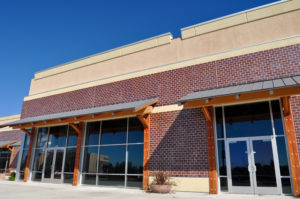If you’re going to include bullet-resistant glazing in your building design or security plan, you first need to understand the types of bullet resistant glass that are available. It can be produced using a handful of different materials. It also comes in a variety of formats and grades to provide different types of protection. Here’s a guide to help you determine which of the different types of bullet resistant glass are the best fits for your specific needs.

Bullet Resistant Glazing Materials
Bullet resistant glazing can be produced using a few different materials. The most common include acrylic, polycarbonate, glass-clad polycarbonate, and laminated glass. Here’s a guide to each one:
- Acrylic systems offer protection at UL 752 levels 1, 2 and 3 (We’ll cover what exactly those entail below). Basically, it’s popular in systems where it can be used as a crime deterrent or in low-level protective systems. It’s fairly durable and offers optimal light transmission, so it’s perfect for systems where visibility is key.
- Laminated polycarbonates offer protection for UL 752 levels 1 through 3 as well but due to their increased impact resistance, these products often carry a forced entry rating as well. These products are also very durable but lack the crystal clear clarity of acrylic.
- Glass-clad polycarbonate is most common where high levels of impact resistance and ballistic protection are necessary. It is available in all UL 752 levels of protection. And it can be layered to provide the specific amount of thickness and impact resistance needed. It doesn’t offer the best light transmission, since it tends to be thick and offer some of the best protection available.
- Laminated glass includes both an interior and exterior pane that are made of glass, with a protective layer of glazing material in between. This provides excellent durability, scratch resistance, and easy cleaning. It provides protection in UL 752 levels 1 through 4. It also tends to be one of the heaviest items available, so it requires strong framing systems to accommodate structures like doors and windows.
Bullet Resistant Glass Forms
This is where you choose the actual form for your bullet resistant glass or glazing product. It should be fairly easy to determine based on your building design and where you may require protection.
Bullet resistant glazing is available in windows and door systems. These are manufactured using the materials listed above and can replace traditional doors or windows made with glass or other materials. There are products made for both interior and exterior applications.
There are also entryway systems designed for facilities where you want to separate the majority of the building’s interior with the area where guests are initially able to enter. This is ideal for facilities where screening may be required to permit entry, like schools or courthouses. Then there are counterline systems that are installed over a customer service area to protect employees or personnel while still allowing for easy communication between the two sides. This is common in businesses like banks and convenience stores. Finally, bullet resistant panels provide protection for wall systems that compliment the bullet resistant glass and glazing products used throughout a facility.
Bullet Resistant Glass Ratings
Within each of these products, there are different levels of bullet resistant glass available. Each one offers a different standard of protection as outlined by UL 752. The type of protection you choose may be based on a threat assessment of your particular facility. Here’s a list of the options available and what each one means.
- UL 752 Level 1: Must be able to resist a minimum of three shots from a 9mm traveling at a minimum velocity of 1,175 feet per second. This provides protection from small caliber handguns and is often chosen by small businesses looking for a crime deterrent.
- UL 752 Level 2: Must withstand at least three shots of .357 magnum soft points traveling at a velocity of 1,250 feet per second. This provides protection from larger caliber handguns. It’s popular in customer facing settings with slightly elevated security needs, like banks or jewelry stores.
- UL 752 Level 3: Must withstand a minimum of three shots of .44 magnum rounds at a velocity of 1350 feet per second. This provides an even higher level of protection, so it’s common in government buildings and police stations.
- UL 752 Level 4: Must withstand at least one shot from a .30 caliber rifle with a minimum velocity of 2540 feet per second. UL 752 levels 1-3 are lineal, but levels 4 and above simply describe different types of protection that are not necessarily better or worse than one another.
- UL 752 Level 5: Must withstand at least one full metal jacket round from a 7.62mm rifle with a velocity of at least 2750 feet per second.
- UL 752 Level 6: Must withstand at least five 9mm rounds traveling at an elevated minimum velocity of 1400 feet per second. This provides elevated protection over level 1 products.
- UL 752 Level 7: Must withstand multiple full metal jacket rounds with 5.56 rifle with a minimum velocity of 3080 feet per second.
- UL 752 Level 8: Must withstand at least five shots from a 7.62mm rifle. This is the highest level of protection available in bullet resistant glass.
If you’re ready to improve your building security with types of bullet resistant glass, contact Insulgard to discuss your options. We offer a wide array of protective systems, including doors, windows, panels, entryways, and counterline systems. We can walk you through every step of the process, from product selection to finding a qualified installer in your area. Our products are tested to meet specific standards outlined by internationally recognized entities by UL. To discuss your bullet resistant glass options, contact our team today to get started.

